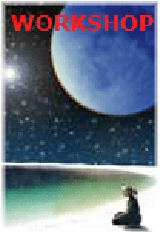
How to Do Sun Salutation – a Great Active Meditation
This is the conventional method of meditation, but in active meditation we can meditate while we do any lifetime activities like walking, dancing, or while doing any other exercises too. This type of meditation is called active meditation. In this way Sun salutation has all the features for an active meditation. Now we will learn how to do active meditation using Sun salutation. Now we will learn Sun salutation as an active meditation step by step now.
Tips on How to Do Sun Salutation as an Active Meditation: Best time to do: Morning 5:30 a.m. to 6 a.m.
Best place to do: To practice Sun salutation as an active meditation, it is important to find a place that is quiet and free of interruptions or commotions. A place with fresh air circulation and a well-to-do temperature is great to do this. Please confirm that the floor space is neat and hygienic. An out-of-doors space is what ‘s more immense if you are looking for to be on your doorstep to nature. Nevertheless it has got to be with no interruptions.

Best materials needed to do: Yoga carpet, relaxed outfits, and uncovered feet.
Sun salutation as an active Medication is a combination of seven yoga postures in 12 steps, each of which consists of corresponding breathing types for it either inhalation or exhalation, which should be strictly followed to get the most effects of this active meditation. Keen concentration on breath and movements only gives this an active meditation effect. You may consult a doctor before you start doing.
Namaste or Pranamasana or Prayer Pose or Mountain Pose
Start by fetching feet and legs together by standing upright and extend your toes. Unite the palms and take care your heels are fixed and stiff your legs. After that, turn over your shoulders back and down and extend and raise your chest. This stance facilitates to bring and maintain timidity, leisure, and stillness. Now breathe out entirely (exhale completely) via nose.
Wood Chopper or Hastauttanasana or Extended Mountain Pose or Raised Arm Posture
Breathe in (exhale) via nose and draw out arms equally together above the head, palms in front of upwardly (prayer position). Curve the back and draw out the entire body. This stance draws out the chest and the abdomen and picks up the oomph upwardly to the higher divisions of the body impelled as a result of gasping of [[air]].
Lunge or Padahastasana or Hand to Foot posture or Swan Dive to Forward Bend
Breathe out (exhale) via the nose by curve the body to the fore and downhill and maintain the spine in a straight line. Stay away from giving away. Maintain the legs straight and at the right angles to the floor. The knees perhaps made available to curve modestly in stipulation. This stance rubs the abdominal appendage. The energy is directed to the inferior portions of the body drove as a result of breathing out (exhalation).
Standing Lunge or Ashwa Sanchalanasana or Equestrian Posture
Now inhale via the nose, on your subsequent breathing in, pull out the left leg posteriorly and go down the knee to the floor. Now the right knee is curved and set aside amid the hands, and the right foot located horizontally on the floor. Now raise the spine and release the chest.
Downward Facing Dog or Parvatasana or Mountain Posture
After exhalation fetch the right leg rear to joint with the left leg is, and at the same time lift up the buttocks and let down the head amid the arms, consequently the body looks like a triangle with the floor. Now make an effort to locate the heels horizontal to the floor. Concentrate attentiveness on the neck area. This stance reinforces the arm and leg muscles and nerves, draws out foot muscles to maintain the spine upright and stretched tight.
Cobra or Plank Pose or Ashtanga Namaskara or Salutation with Eight Limbs
Breathing out lightly and let fall both knees together to the floor. Now gradually glide the body downhill at a position as the same time as you fetch the chest and jaw to the floor. Now the entire eight limbs- toes, knees, chest, hands and chin – touch the ground. The buttocks are set aside up and about. Now grasp the lungful of air. This stance builds up the chest and toughens arms and transport extra blood to this part makes easier to invigorate the nerves.
Puppy or Knees-Chest-Chin Post and Bhujangasana
Inhale now and lower the hips as the same time as nearly the chest ahead and in the air by means of hands, in anticipation of the spine is totally bowed and the head is opposite. The knees and inferior abdomen stay behind on top of the ground. Center the attention with the alertness at the bottom of the spine, and you can experience the pressure on or after to the fore jerk.
Cat or Parvatasana or Mountain Posture
(This is the repeat of Step 5)
Exhale and after exhalation fetch the right leg rear to joint with the left leg is, and at the same time lift up the buttocks and let down the head amid the arms, consequently the body looks like a triangle with the floor. Now make an effort to locate the heels horizontal to the floor. Concentrate attentiveness on the neck area. This stance reinforces the arm and leg muscles and nerves, draws out foot muscles to maintain the spine upright and stretched tight.
Extended Child’s Pose to Dog Pose or Ashwa Sanchalanasana or Equestrian Posture
(This is the repeat of Step 4)
Inhale and swing the right leg forward between the hands. The left leg remains back and now inhale via the nose, on your subsequent breathing in, pull out the left leg posteriorly and go down the knee to the floor. Now the right knee is curved and set aside amid the hands, and the right foot located horizontally on the floor. Now raise the spine and release the chest. Now focus at the eyebrow midpoint.
Closing Lunge or Standing Lunge or Padahastasana or Hand to Foot Posture
(This is the repeat of Step 3)
Now breathe out (exhale) via the nose by curve the body to the fore and downhill and maintain the spine in a straight line. Stay away from giving away. Maintain the legs straight and at the right angles to the floor. The knees perhaps made available to curve modestly in stipulation. This stance rubs the abdominal appendage. The energy is directed to the inferior portions of the body drove as a result of breathing out (exhalation).
Wood Chopper or Reverse Swan Dive Transition or Hastauttanasana or Raised Arm Posture
(This is the repeat of Step 2)
Breathe in through the nose and raise the trunk up and bend backward and draw out arms equally together above the head, palms in front of upwardly (prayer position). Curve the back and draw out the entire body. This stance draws out the chest and the abdomen and picks up the oomph upwardly to the higher divisions of the body impelled as a result of gasping of air.
Namaste or Pranamasana or Prayer Pose or Mountain Pose
(This is the repeat of Step 1)
Straighten the body and bring the hands in front of the chest and start by fetching feet and legs together by standing upright and extend your toes. Unite the palms and take care your heels are fixed and stiff your legs. After that, turn over your shoulders back and down and extend and raise your chest. This stance facilitates to bring and maintain timidity, leisure, and stillness. Now breathe out entirely (exhale completely) via nose.
Breathe out through the nose to return to mountain pose to complete the Sun salutation. Now do again the Sun Salutation on the other leg.
About the Author
Diane H. Wong is copywriter at domywriting.com. Besides, she is a professional nutritionist. So she is going to start writing her own blog. It can help her share her knowledge with others.
Comments:














